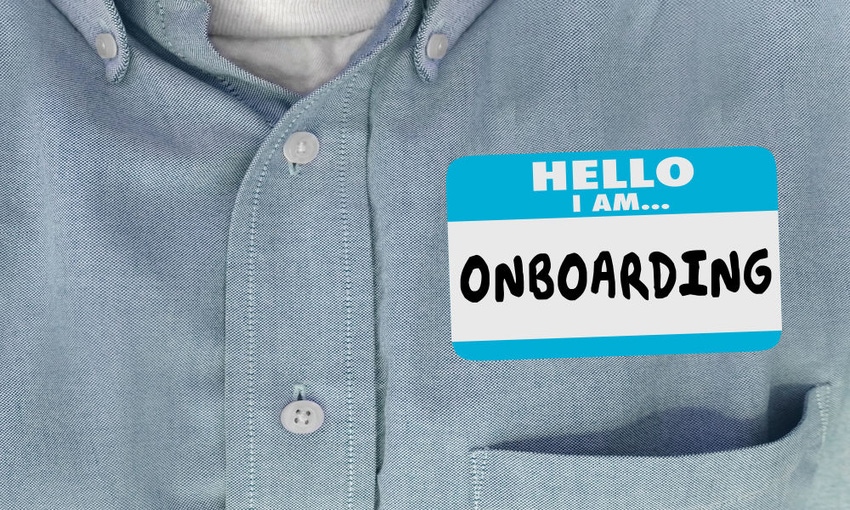Use automation to save time, document fully and don't underestimate the client's environment.
August 26, 2019

By Vincent Tran

Vincent Tran
By Vincent Tran, COO, Liongard
For MSPs, onboarding new clients can be a time-consuming, week-long endeavor. Currently, MSPs spend about 40 to 80 hours manually entering information from existing systems and databases to onboard each client, overseeing everything from Office 365 accounts to Cisco router configurations.
This drawn-out process can often affect the customer experience by starting things off on the wrong foot. As MSPs are still performing onboarding tasks, many times tickets already have started rolling into the help desk: It’s never good to start off behind in a new job.
The resulting bottleneck can cause irreversible damage to customer confidence, ruining a fruitful relationship before it even begins. MSPs need to focus on customer experience from the beginning to ensure they build customers’ trust and demonstrate fast time-to-value by avoiding wasted time in the onboarding process.
Underestimating a Client Environment
MSPs work with a broad range of clients. Before beginning the onboarding process, it’s essential for them to fully understand what precisely the client does, how they do it and what products they use to best serve them. Underestimating the client’s environment is one of the main factors resulting in an onboarding bottleneck.
You also need to consider things that could possibly go wrong. Discovery tools will sometimes miss half the client environment – you will need to be thorough and plan for the worst. Sometimes, existing tools may miss items such as printers. If you miss out on these items, you need to be prepared to lose time going back in to update documentation.
As with much of life, money needs to be discussed before starting onboarding, as clients are often concerned about onboarding costs. It’s important for everyone to be on the same page. While it may be challenging, it’s important to reduce client onboarding costs to stay competitive with the hordes of other MSPs out there. Gaining the customer’s trust through positive customer experiences is the best way to achieve lasting success and avoid an unnecessary bottleneck in the beginning.
Clients who have spent years working with traditional one-off IT companies (project-based work) can expect a marked improvement in services if they turn to an MSP. New customers transitioning to a managed service contract must be supported virtually on the day they sign – and no later. To do this, it’s important to have information on their environment ahead of time, and establish a baseline in a system of record to ensure a smooth transition. Ultimately, your goal is to reduce IT pain. Understanding the environment ahead of time and then onboarding quickly is key to a successful MSP transition.
Standardizing Client Environment
People are naturally resistant to changing their IT systems. This is a challenge when an MSP’s core competencies are run on different technology than that used by the new customer. By letting the potential client know the technology road map, and setting expectations that there may be issues early on, you will have set yourself up for the best chance at success.
Prospective customers may not want to change systems or refuse to do so because of cost-driven or emotional reasons. It’s essential to show them in explicit detail the benefits of switching to your offering. Your assessment could include the risks they have today and what that could mean to them in financial terms.
Before onboarding them, you need to get your clients to …
… buy into using your preferred system to reduce wasted time. At the very least, the onboarding process should include the path to get them up to your company’s MSP standards. They will be infinitely easier to support because they have commonalities with other customers. MSPs should be clear with their intentions, explaining to customer the benefits of a standardized system stack. If the potential customer doesn’t want to make the switch or doesn’t see the benefits you outline, sometimes the MSP needs to leave the deal on the table.
If you accede to new customers that don’t want to standardize, you’re opening yourself up to unfamiliar tools and environments that will ultimately drain your resources. When do you draw the line? When your MSP is first starting out, it may be almost impossible to turn away a customer that isn’t the right fit. However, once the business has matured and has the self-knowledge and processes to know the customer that is indeed the best fit for your offering, you’ll understand when to say no. For example, you may have difficulty onboarding clients in niche industries such as legal practices or accounting firms. But if they end up being your core customer base, your processes and standards will be molded to these industries.
Service providers that standardize already have a faster and smoother onboarding process. While customers may push back at standardization, point out that they will have a quality customer experience in the long run.
Outside of MSPs, standardization has proven to be beneficial in reducing costs for a variety of companies. Look no further than Southwest airlines, which uses the same plane, processes and nearly everything else to reduce costs.
Onboarding: Documentation Counts
There’s nothing worse than having to repeat something that already was completed. When onboarding is done incorrectly, you run the risk of having to do it all over again – and if everything about the customer environment wasn’t written down, you could be starting again at square one.
Without proper documentation of the environment at onboarding or only documenting things half-way, your company runs the risk of post-onboarding pain. The need for documentation is often an underappreciated part of the onboarding process, especially as the customer probably will never see the documentation. You also need to keep their documentation current. If not, you risk increasing your bottleneck with time wasted on “re-onboarding” throughout the partnership.
Changes are constant and companies could be back at square one again easily. Consistently updating the customer environment is essential to avoid frustration. For example, when a technician has to go in and identify an issue, it’s essential for them to document this for future reference. If this step is missed, it will lead to future cases of re-onboarding bottlenecks.
The struggle to break through bottlenecks is a challenge in any field. For MSPs, it often kills a relationship with a customer before it even begins. Using automated tools to document changes in their systems and carefully pre-planning the transfer can reduce the onboarding experience to several hours. That streamlining smooths the onboarding bottleneck and provides the best possible customer experience.
Vincent Tran, CISSP, is COO at Liongard, an automation platform that enables MSPs with visibility beyond the endpoint and into critical on-premises apps, the network stack and cloud services. Follow him on LinkedIn or @LiongardHQ.
Read more about:
MSPsYou May Also Like
